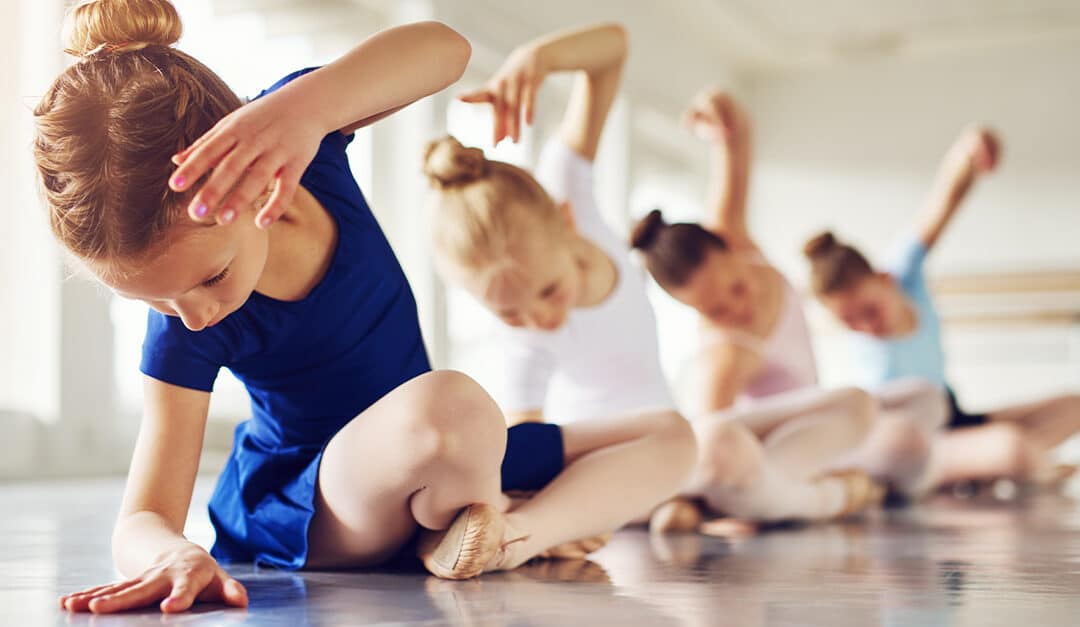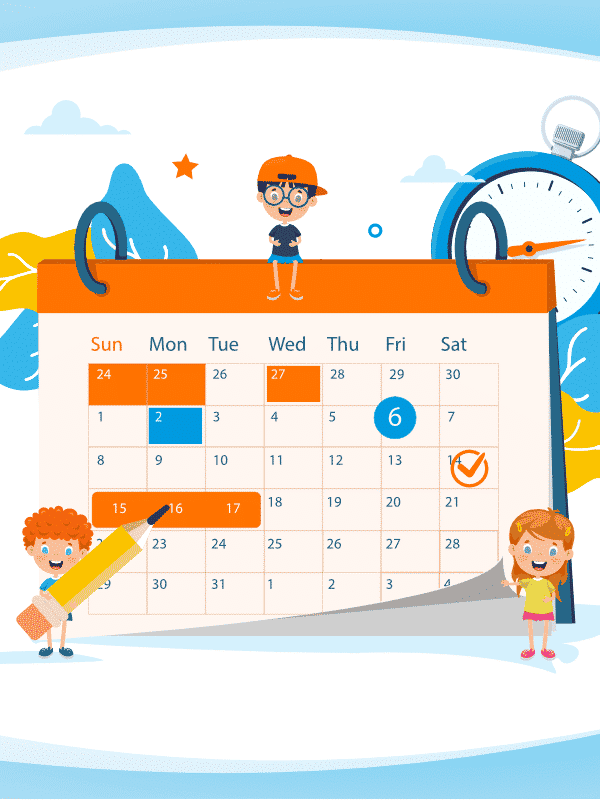Ballet is a beautiful art form. No wonder why so many kids love it and want to grow up to be on the greatest stages. But even if they do it just for fun, they’ll keep the skills ballet gives them forever. And this doesn’t just mean good coordination or great flexibility, it also means discipline, perseverance, and responsibility. Oh, and guess what? Ballet helps with language skills too.
Yes, really! A lot of the ballet jargon comes from the French language, and these words are used just like that in different countries. But of course, there are still some words related to ballet that change depending on the language. Let’s also not forget that ballet is practiced all around the world. So, yes, this art form can help your kids learn languages, and Spanish is no exception.
Maybe you’re moving to a Spanish-speaking country and don’t want your kids to leave ballet. Or maybe you just want them to practice the language through something they love. Whatever your goals are, our TFK Spanish vocabulary for kids that dance ballet guide will help you achieve them. Check it out!
Spanish Words for Ballet Class
- Dance – Baile
- Ballet – Ballet / Danza clásica
- Art – Arte
- Ballet dancer / Ballerina – Bailarín de ballet / Bailarina de ballet
- To dance – Bailar
- Jump – Salto
- Ballet shoes – Zapatillas de ballet
- Ballet pointe shoes – Zapatillas de punta
- Ballet slippers – Ballerinas / Balerinas
- Leotard – Leotardo
- Tights – Mallas
- Tutu – Tutú
- Warm-up – Calentamiento
- Ballet class – Clase de ballet
- Stage – Escenario
- Presentation – Presentación
- Arms – Brazos
- Feet – Pies
- Flexible – Flexible
- To stretch – Estirar
- To spin – Girar
- Turns – Giros
- En pointe – En punta
- Barre – Barra
- Center – Centro
- Technique – Técnica
- Choreography – Coreografía
- Classical music – Música clásica
- Company – Compañía
- Audition – Audición
- To audition – Audicionar
- Corps de ballet – Cuerpo de baile
- Coryphee – Corifeo
- Soloist – Solista
- Principal dancer – Bailarín principal
Ballet Positions
As your kids might know, there are five different ballet positions, and a preparatory one, that are the basics of ballet. That’s why they’re taught from the beginner levels. The feet and arms change according to the position. As you can see, it’s very important for children to learn how those ballet positions are called.
So, here are the Spanish names of the ballet positions:
- Bras bas / Preparatory position – Posición preparatoria
- First position – Primera posición
- Second position – Segunda posición
- Third position – Tercera posición
- Fourth position – Cuarta posición
- Fifth position – Quinta posición
Names of Ballets in Spanish
As you may know, there are many different awesome ballets out there. You probably know the names in English; maybe you’ve even gone to see one or more in your own country.
But what if you ever want to travel to a Hispanic country and watch one with your kids? No worries, we got you covered! Here are the names in Spanish of various ballets:
- Swan Lake – El Lago de los Cisnes
- Rome & Juliet – Romeo y Julieta
- Giselle – Giselle
- Sleeping Beauty – La Bella Durmiente
- The Nutcracker – El Cascanueces
- Don Quixote – Don Quijote
- Carmen – Carmen
- Cinderella – La Cenicienta
- Coppélia – Coppélia
- The Magic Flute – La Flauta Mágica
- A Midsummer Night’s Dream – Sueño de una Noche de Verano
- Onegin – Oneguin / Onegin
- The Firebird – El Pájaro de Fuego
- Le Corsaire – El Corsario
- La Sylphide – La Sílfide
Phrases in Spanish for Ballet
When you like something, you want to talk about it with other people, right? You want to share your love and knowledge. So here are some phrases and questions in Spanish for children to express their feelings surrounding ballet and all they’ve learned in class.
You’ll notice we used some of the vocabulary above, so your kids start practicing it:
- I love ballet! / ¡Amo el ballet!
- What’s your favorite dance style? / ¿Cuál es tu estilo de baile favorito? El mío es la danza clásica.
- Mom, I’d like to learn ballet, please. / Mamá, me gustaría aprender ballet, por favor.
- My favorite ballet is Swan Lake. / Mi ballet favorito es El Lago de los Cisnes.
- I want to be a ballerina when I grow up. / Quiero ser bailarina cuando crezca.
- We learned the fifth position in today’s class. / Aprendimos la quinta posición en la clase de hoy.
- My favorite ballet dancer is Isaac Hernández. / Mi bailarín de ballet favorito es Isaac Hernández.
- I need new ballet tights, because my old ones got a lot of holes. Could you buy me new ones, please? / Necesito nuevas mallas de ballet, porque las viejas tienen muchos agujeros. ¿Me podrías comprar unas nuevas, por favor?
- My teacher told me my plié tecniche has gotten much better! / ¡Mi maestra me dijo que mi técnica de plié ha mejorado mucho!
- Sasha auditioned yesterday for the Giselle ballet. I hope he gets the role he wanted. / Sasha audicionó ayer para el ballet Giselle. Espero que obtenga el rol que quería.
- Guess what? I’m going to be Clara for my school’s Nutcracker ballet! / ¿Adivina qué? ¡Voy a ser Clara en el ballet de El Cascanueces de mi escuela!
- What’s your favorite ballet dancer? / ¿Cuál es tu bailarín de ballet favorito?
Tips to Learn Spanish Through Ballet
Okay, we have the vocabulary, but seriously how can we help our kids learn Spanish while dancing ballet? Here are some tips and trick for that:
Ask questions
Ask your children questions in Spanish. First off, they’ll see you’re interested in their hobbies and passions, which is always an awesome feeling for your kids. They’ll love to share what they love with you, and you’ll bond.
Second, if they see you speaking or asking questions in Spanish, they’ll be more motivated to answer in Spanish. Plus, if they’re talking about something they love, like ballet, they won’t feel too stressed speaking a language they don’t know very well yet. This is because they’ll be enjoying the chat.
Improvised Spanish ballet class at home
If you’ve attended some of your children’s ballet classes or you also know how to dance ballet, this is a great option. Improvise a ballet class at home with your kids.
You can use whatever you have at home. For example: Use the living room as the classroom or dance studio by moving the furniture a little bit to make space. And if your children already have a ballet barre, then use that for the exercises. If they don’t have one, use some furniture, just make sure it’s safe for the kids. Let’s get creative!
Then, start the class! If you know Spanish, speak the whole class in Spanish. Teach them a little warm up. Ask them in Spanish to make the ballet exercises you’ve seen the teacher has taught them. Correct their technique mistakes in Spanish. Ask them to explain a ballet movement in Spanish to you, and so on.
If you don’t know Spanish, teach the class in your mother tongue, but splash some Spanish ballet words and phrases every now and then. You can help yourself with the vocabulary above.
History of ballet in Spanish
Teach your kids the history of ballet in Spanish. You can teach them the history while speaking Spanish the whole time. You can play Spanish videos about it for your kids. Or you can ask their Hispanic friends to speak about ballet history with your children in Spanish.
Choose the option that you want. They’ll learn about the art that they love while acquiring the Spanish language.
Read in Spanish
How is reading related to ballet? Well, many ballets are based on books and plays. You can buy your kids the book that their favorite ballet was based on. For example: If their favorite ballet it’s Romeo & Juliet, buy the play for them.
But, make sure to buy the Spanish translation. Then, you can either read the play for them or make them read it out loud to you.
This way they’ll practice different language skills, like listening, speaking, reading, and comprehension.
Bonus points if their favorite ballet is Don Quixote, as that book was written in Spanish! So they won’t even have to read a translation, but the original text.
Though since it’s quite long, some might find it difficult for very young kids. But that’s okay, you can look up for a kids’ version of Don Quixote. You can do the same for any book that inspired a ballet that you think it’s quite complex for children to read.
Dance Your Way Gracefully Through the Spanish Language with TFK
Did you see how useful it is for your kids to learn Spanish through something they love? Well, guess what? They can keep doing that with our online TruFluency Kids’ Spanish classes! Because we make sure they have tons of fun.
We teach through fun activities, like singing, dancing, playing games, storytelling, crafting, and even cooking! These are all common activities that children do all the time. So it’s not just fun, but also useful, because they’ll learn how to do all those activities in Spanish!
Our native teachers will also make sure your kids develop skills in all language areas, from reading and writing to listening and speaking. Yeah, we’ll encourage your kids to speak in every class, so they achieve Spanish fluency!
Come discover it all by yourself. Take a 30-minute trial class now! It only costs $9 and you’ll get to be a part of a parent Q & A after class is finished, so we can clear all your doubts.
We make the process of learning a new language like dancing: hard work but fun. In the end, your kids will speak Spanish as gracefully as a dancer jumping on stage.


